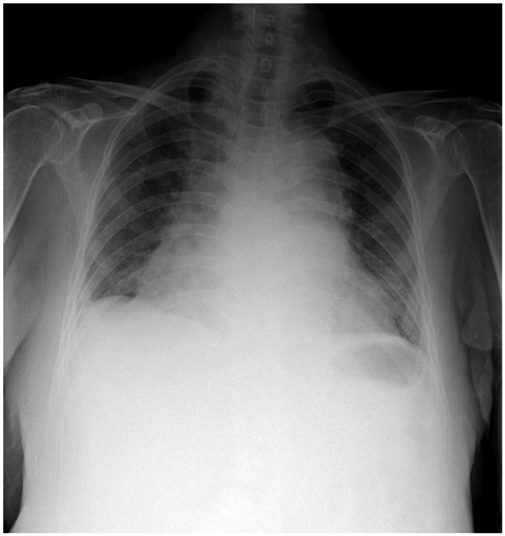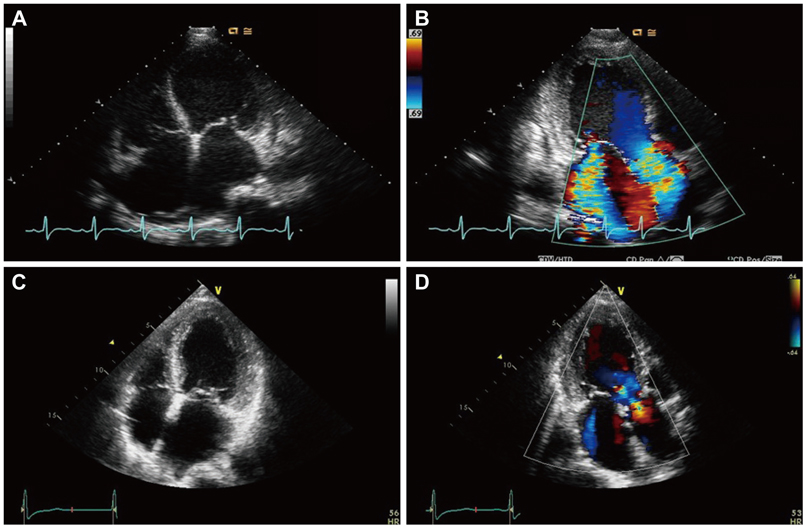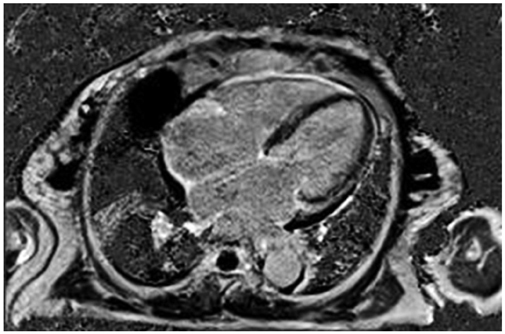Korean Circ J.
2013 Aug;43(8):569-572. 10.4070/kcj.2013.43.8.569.
A Case of Cardiac Beriberi: A Forgotten but Memorable Disease
- Affiliations
-
- 1Cardiovascular Center, Seoul National University Hospital, Seoul, Korea. parkyb@snu.ac.kr
- KMID: 2224849
- DOI: http://doi.org/10.4070/kcj.2013.43.8.569
Abstract
- Thiamine (vitamin B1) serves as an important cofactor in body metabolism and energy production. It is related with the biosynthesis of neurotransmitters and the production of substances used in defense against oxidant stress. Thus, a lack of thiamine affects several organ systems, in particular the cardiovascular and nervous system. The cardiac insufficiency caused by thiamine deficiency is known as cardiac beriberi, with this condition resulting from unbalanced nutrition and chronic excessive alcohol intake. Given that the disease is now very rare in developed nations such as Korea, it is frequently missed by cardiologists, with potentially fatal consequences. Herein, we present a case study in order to draw attention to cardiac beriberi. We believe that this case will be helpful for young cardiologists, reminding them of the importance of this forgotten but memorable disease.
MeSH Terms
Figure
Reference
-
1. Jones RH Jr. Beriberi heart disease. Circulation. 1959; 19:275–283.2. Astudillo L, Degano B, Madaule S, et al. Development of beriberi heart disease 20 years after gastrojejunostomy. Am J Med. 2003; 115:157–158.3. Cappelli V, Bottinelli R, Polla B, Reggiani C. Altered contractile properties of rat cardiac muscle during experimental thiamine deficiency and food deprivation. J Mol Cell Cardiol. 1990; 22:1095–1106.4. Sriram K, Manzanares W, Joseph K. Thiamine in nutrition therapy. Nutr Clin Pract. 2012; 27:41–50.5. Wooley JA. Characteristics of thiamin and its relevance to the management of heart failure. Nutr Clin Pract. 2008; 23:487–493.6. Yang JD, Acharya K, Evans M, Marsh JD, Beland S. Beriberi disease: is it still present in the United States? Am J Med. 2012; 125:e5.7. Towbin A, Inge TH, Garcia VF, et al. Beriberi after gastric bypass surgery in adolescence. J Pediatr. 2004; 145:263–267.8. Rao SN, Chandak GR. Cardiac beriberi: often a missed diagnosis. J Trop Pediatr. 2010; 56:284–285.9. Naidoo DP, Gathiram V, Sadhabiriss A, Hassen F. Clinical diagnosis of cardiac beriberi. S Afr Med J. 1990; 77:125–127.10. Lahey WJ, Arst DB, Silver M, Kleeman CR, Kunkel P. Physiologic observations on a case of beriberi heart disease, with a note on the acute effects of thiamine. Am J Med. 1953; 14:248–255.11. Essa E, Velez MR, Smith S, Giri S, Raman SV, Gumina RJ. Cardiovascular magnetic resonance in wet beriberi. J Cardiovasc Magn Reson. 2011; 13:41.12. Voigt A, Elgeti T, Durmus T, et al. Cardiac magnetic resonance imaging in dilated cardiomyopathy in adults--towards identification of myocardial inflammation. Eur Radiol. 2011; 21:925–935.13. Lu J, Frank EL. Rapid HPLC measurement of thiamine and its phosphate esters in whole blood. Clin Chem. 2008; 54:901–906.14. Naidoo DP. Beriberi heart disease in Durban. A retrospective study. S Afr Med J. 1987; 72:241–244.
- Full Text Links
- Actions
-
Cited
- CITED
-
- Close
- Share
- Similar articles
-
- A Case of Shoshin Beriberi Presenting as Acute Coronary Syndrome with Shock: Shoshin Beriberi Mimicking Acute Coronary Syndrome
- Wernicke Encephalopathy Associated with Acute Wet Beriberi
- High Cardiac Output Heart Failure Induced by Chronic Severe Anemia
- Experiences of Wet Beriberi and Wernicke's Encephalopathy Caused by Thiamine Deficiency in Critically Ill Patients
- A Case of Beriberi Because of Continuous Rice-soup Feeding during One and Half Years





